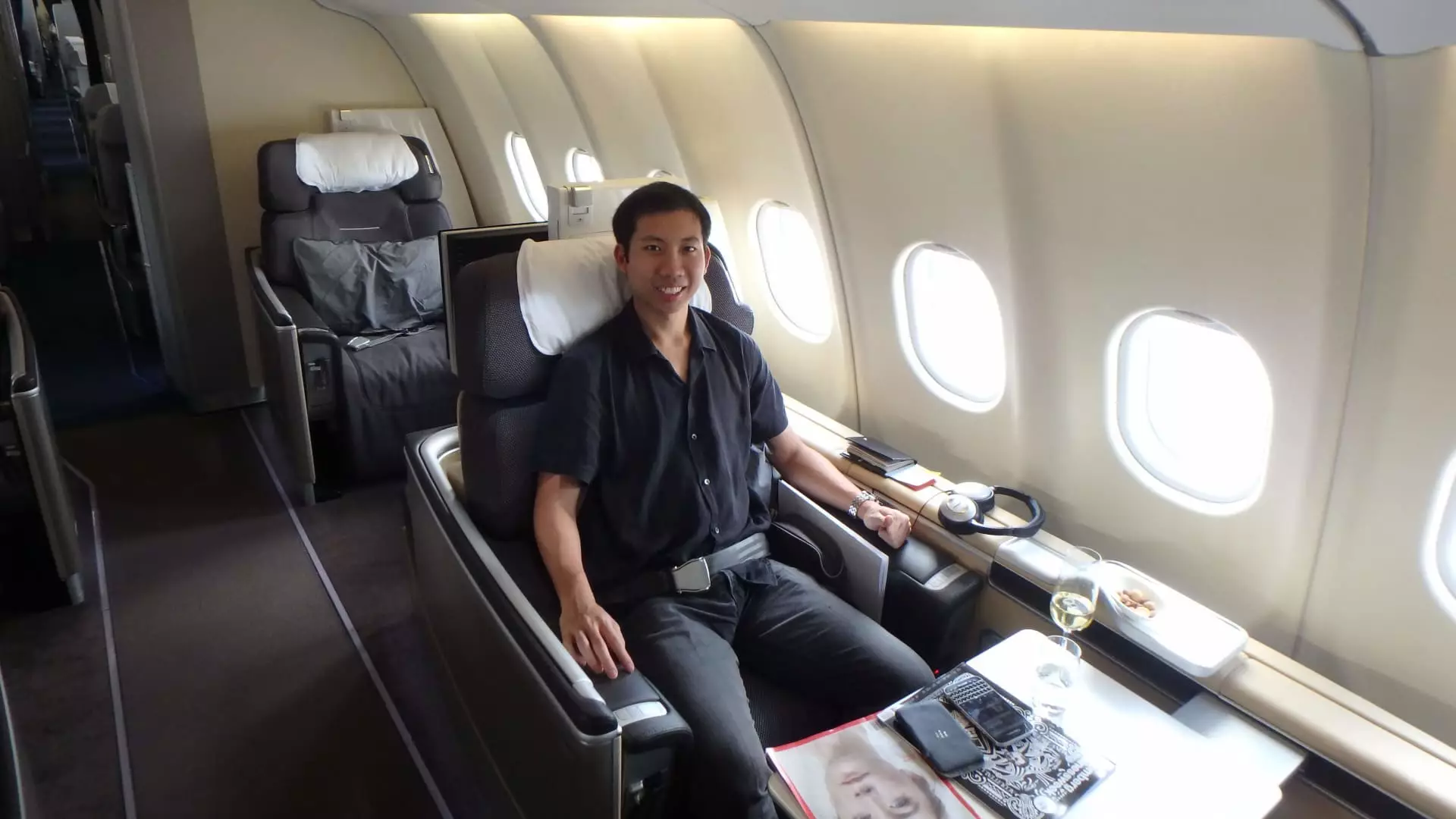When it comes to air travel, indulging in the luxuries of business or first class is often seen as the ultimate upgrade. Yet, for most travelers, these experiences remain dreams due to the prohibitive costs associated with them, especially on international routes. Reserved traditionally for higher-tier business travelers and affluent individuals—often caricatured in popular culture as “crazy rich”—the reality is that with strategic planning and smart credit card usage, anyone can access the opulence of premium airline travel.
Taking a closer look at ticket prices reveals staggering differences that encapsulate the luxury of premium travel. For instance, a round-trip economy ticket from Singapore to London on Singapore Airlines is priced around 1,700 Singapore dollars (approximately $1,303). In stark contrast, upgrading to business class can skyrocket to 6,300 SGD ($4,642), while a first-class seat climbs to a breathtaking 13,000 SGD ($9,682).
Although these figures can be less daunting on shorter-haul flights—for example, the Singapore to Tokyo route offers economy tickets for 1,300 SGD, business class at 4,200 SGD, and first class for about 7,600 SGD—they still underscore a significant investment. Therefore, the allure of sitting in a plush seat, enjoying a gourmet meal, and receiving superior service drives many to seek out ways to fly in style without breaking the bank.
Aaron Wong, a former management consultant turned travel expert and founder of the site The MileLion, epitomizes the potential of savvy spending. Wong takes as many as nine premium flights a year. Remarkably, he does so at a fraction of the cost, leveraging credit card points to finance his travel. This approach emphasizes that flying business or first class does not have to hinge solely on wealth or status, but can also result from strategic financial decisions.
Maxing out on travel points involves more than simply choosing any credit card. “There is no universal ‘best card’; it depends on individual spending habits,” Wong notes. His strategy encourages potential travelers to select credit cards that align with their purchasing patterns, thus optimizing returns on every dollar spent. Some cards may offer lavish bonuses for online shopping, dining, groceries, or transportation, and diversifying one’s credit card usage to capture these bonuses can lead to significant savings or upgraded flights.
To illustrate Wong’s strategy, consider a hypothetical annual expenditure of $30,000 on credit cards. Using a standard card that offers 1.4 miles per dollar yields approximately 45,000 miles—enough for an economy flight to Perth. However, if that spending is divided across multiple cards that offer bonus miles, this same outlay could yield around 120,000 miles, translating to a round-trip business class ticket to far-flung destinations like Cape Town.
This strategy underscores a crucial point: many miles can be left unclaimed simply due to card mismanagement. For instance, selecting a card that only grants 1.3 miles per dollar instead of opting for one that awards 4 miles per dollar can result in losing valuable miles. Wong aptly compares this to using the wrong tool for a task, emphasizing the importance of selecting the right credit card for specific purchases.
However, diving into the world of credit card rewards is not without its challenges. Wong acknowledges that managing multiple cards can be “nitty gritty”—requiring attention to detail that many might find overwhelming. Cardholders must familiarize themselves with various reward structures, expiration dates, and the intricacies of pooling points from different cards. For instance, while points from DBS cards in Singapore can be combined, Citibank cards maintain separate accumulations.
Despite these complexities, Wong firmly believes the rewards justify the effort. “The incentives are compelling enough,” he argues, implying that the discomfort associated with learning the intricacies of reward points is a small price to pay for the potential luxury they can afford.
For those eager to join the ranks of “miles chasers,” Wong offers sage advice: do not increase spending solely for the sake of accumulating points. Some may rationalize that more spending equates to higher rewards, but Wong cautions against such a mindset, suggesting it could lead to unnecessary expenditures.
Ultimately, smart financial planning coupled with the right credit card strategies can unlock the door to premium travel experiences that many only dream about. By understanding the ins and outs of loyalty programs, travelers can expertly navigate the complexities of the mileage game, transforming lavish flights into attainable experiences without falling prey to wasteful spending.


Leave a Reply